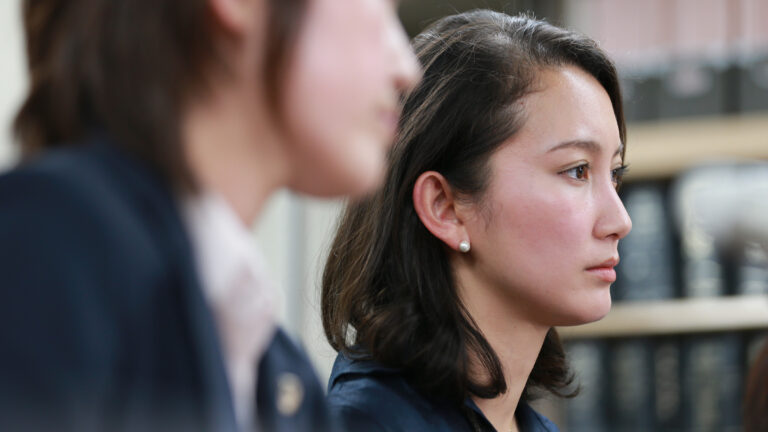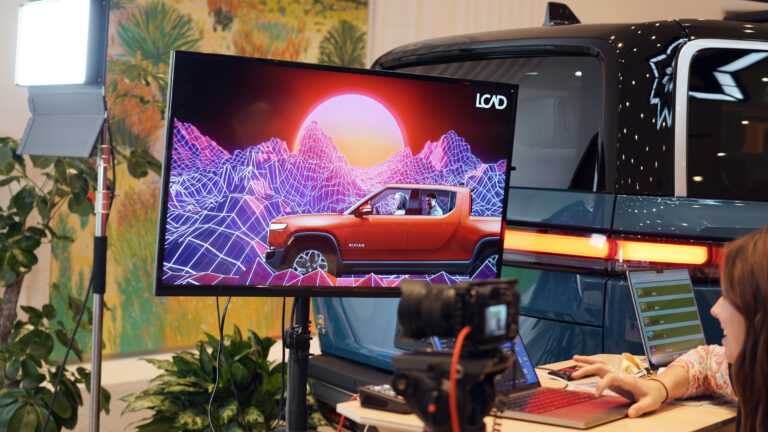When you’re creating a natural history series for National Geographic and Disney, you go big. No ask is too daunting, no task too complex, as long as you have the right team—and the right tools—for the job.
So when the aerial photography specialists at V/SPEED were asked to fly toward a forming tornado, they jumped at the chance. It’s what you live for when you have award-winning cinematographers, a legendary pilot roster that includes a TOPGUN pilot, an expert meteorologist, and a fleet of purpose-built aircraft outfitted with one of the most advanced aerial camera rigs in the world.
To up the level of difficulty, they weren’t “just” shooting a tornado at close range over the US. With a client in the UK during COVID, across an ocean and multiple time zones, they had to share their extremely high-value footage securely—and at a quality sufficient to demonstrate that they’d gotten their shot—within moments of landing.
In this installment of Made in Frame, we meet the team at Wildstar Films and V/SPEED, who spent two years capturing never-before-seen aerial footage for America the Beautiful, to learn about their techniques and tools—and why they rely on Frame.io as an essential part of their process.
A highly experienced team
Creating natural history shows is never an easy feat. Whether traveling to remote locations, crouching in a blind for hours (or days) to capture a rare animal behavior, or photographing dramatic landscapes from the ground or air, you need the right equipment and plenty of endurance.
But especially at a time when these shows and films are both abundant and of the highest quality, coming up with new and novel approaches to telling nature-centric stories has become even more challenging.
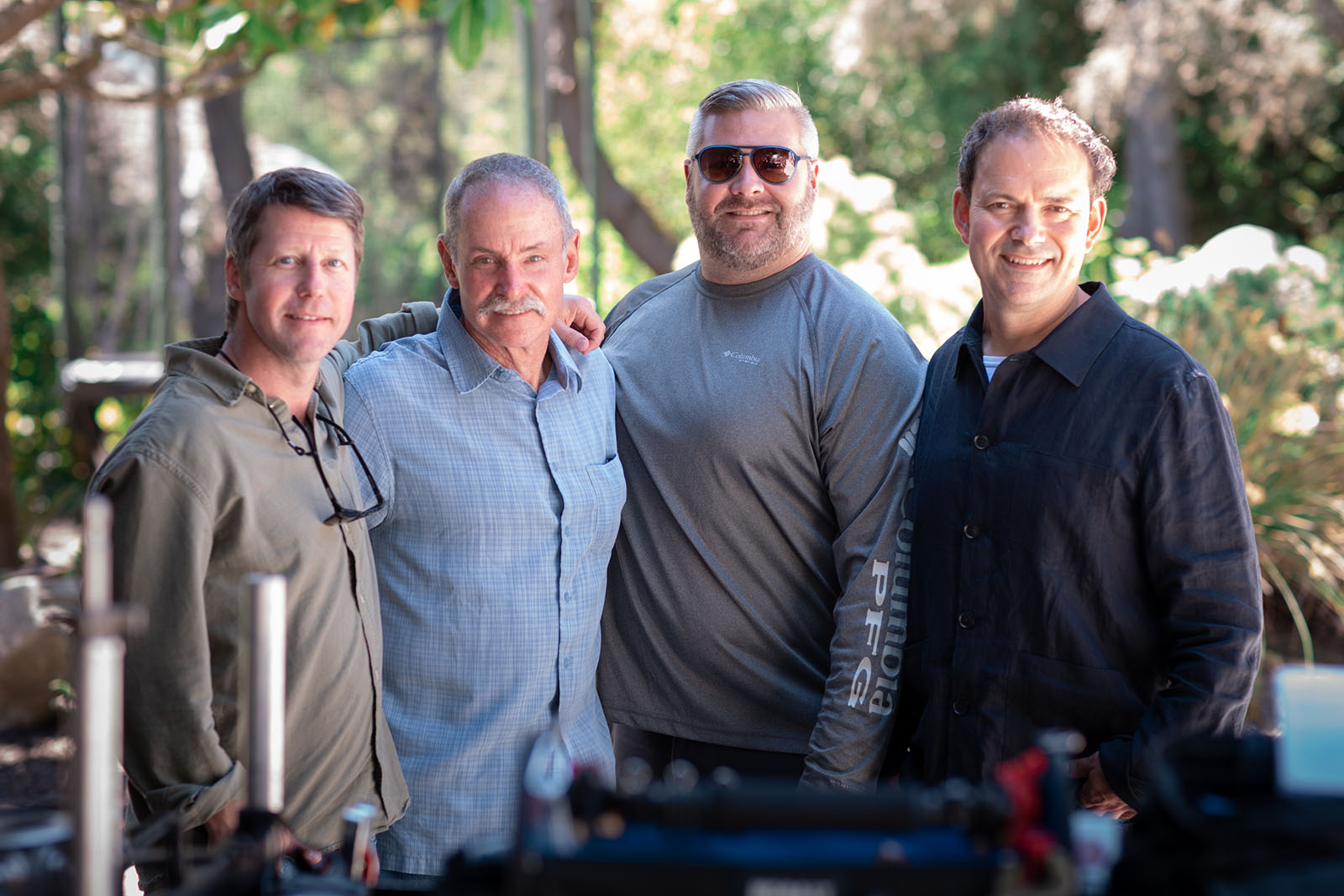
Mark Linfield, aerial director and co-executive producer at Wildstar Films in England, would know. Along with partner Vanessa Berlowitz, they’re responsible for some of the most iconic offerings in the genre, and have built their careers traveling the globe to capture the behaviors and phenomena that fascinate and educate people of all ages. Among them: Planet Earth and Frozen Planet for the BBC, and Elephant and Monkey Kingdom for Disneynature.
When National Geographic contacted Wildstar to see if they’d like to take on America the Beautiful, a six-part series about the influences and species that make the United States such a unique ecosystem, their experience led to some initial concerns.

“It was an amazing opportunity, but let’s face it, the American continent is one of the most photographed landmasses out there,” Mark says. “The American people are so well-traveled. They go to national parks. Many of them are great filmmakers in their own right. So trying to come up with something original and exciting that would surprise people in America was going to be a challenge. But we had to say yes.”
Mark and Vanessa asked themselves some hard questions. “How are we going to make the most famous landscapes and some of the most iconic animals, like mountain lions and bison and bears, look fresh? We knew we had to photograph them in unusual ways doing unusual things,” Mark says.
“The landscapes were an even bigger challenge. We were very familiar with filming from a helicopter and we’ve filmed a lot from drones in recent years. But because those ways of filming landscapes—and the landscapes themselves—are all quite familiar now, we knew we needed a new tool.”
Enter V/SPEED, the company founded by Mike Knockenhauer and Greg Wilson. Mike’s background as a pilot and his strong meteorologic and tactical skills help him lead the intrepid team precisely and, more importantly, safely, through the kinds of projects that few people on this planet could even consider taking on.
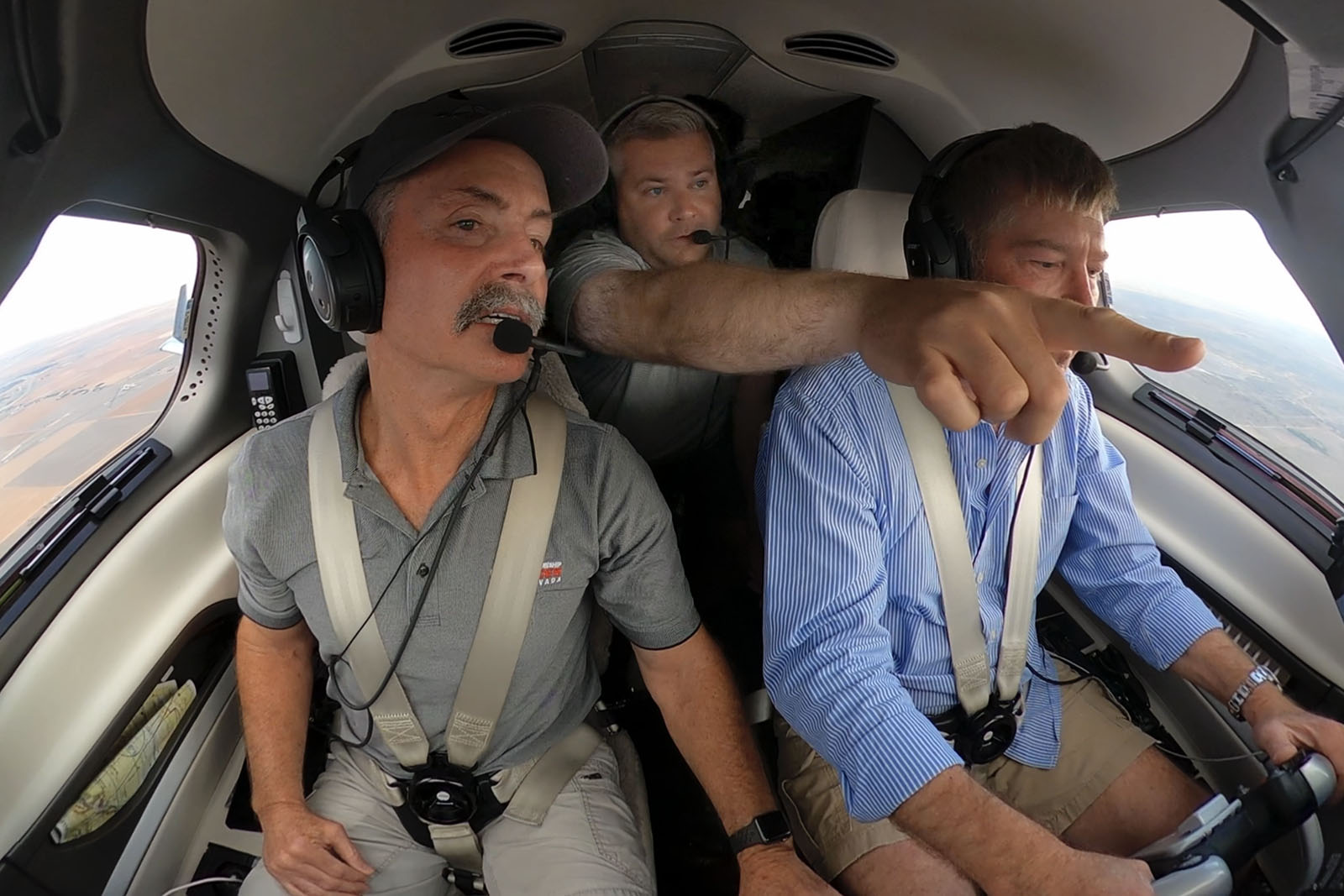
Greg, though not a pilot himself, is an Emmy, Clio, and International Documentary Award-winning photographer and cinematographer. He’s renowned for his approach to designing and crafting unique solutions to previously impossible cinematic shots to innovate new ways of storytelling.
Along with their pilots, technicians, and specialists, who include John Flanagan, a decorated Navy veteran F-14 pilot and TOPGUN alum who went on to fly an F-16N to train pilots as an air combat maneuvering instructor (like a mashup of the characters of Viper and Jester from the original Top Gun movie), the team used their collective skills to deliver what Mark was seeking.
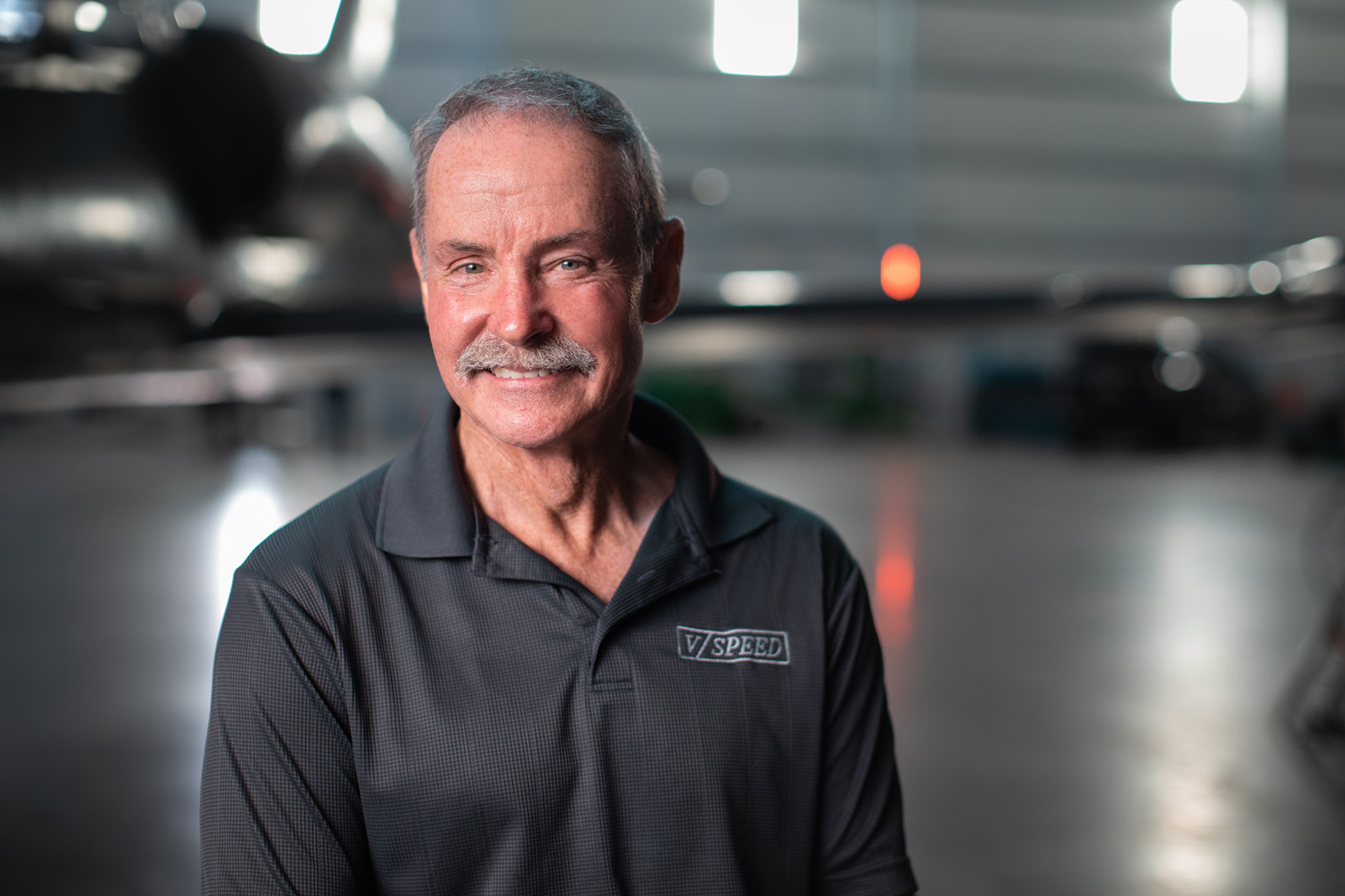
Mark explains how the team came together. “Early on, we saw some clips from V/SPEED and we met Mike and Greg. They didn’t have a huge amount of material at that stage to share, but they had just enough to give us an idea of what might be possible. The clips were fairly short, but you could already see that being high and fast gave a kind of overview effect of the landscape, and it enabled you to see bigger-picture things, like how environments fit together. It was quite different from the effect that you get from a helicopter or a drone,” he says.
After shooting some test footage for Mark in Monument Valley, he was convinced that this was indeed the right approach. “We thought, this is the tool that could make the difference.”
High-tech tools
Among V/SPEED’s fleet is an L-39, a Czech-made, high-performance jet formerly used as a trainer for Soviet pilots. “It’s a fun airplane to fly,” John says. “Because it’s so nimble, I have the ability to move it around much more than other kinds of aircraft that are used in cinematography.”
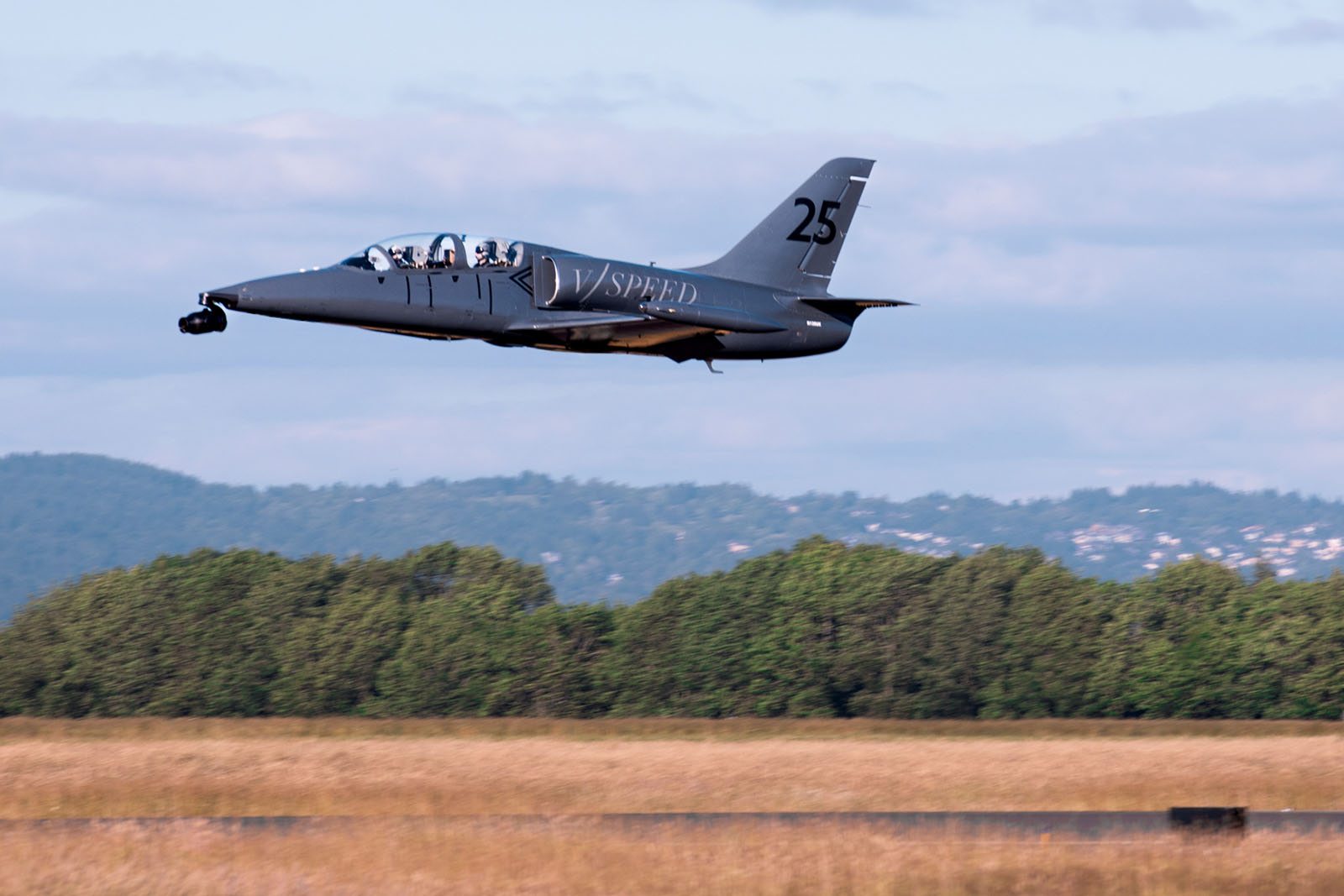
When configured for filming, V/SPEED jets can reach altitudes up to 45,000 feet and 400 mph. John describes how his Navy training makes him so uniquely suited to thrive under the intense demands of V/SPEED missions. “In the military you’re trained to deliver weapons, and as a fighter pilot you do it with high precision and a great understanding of how the aircraft operates. In fact, the whole idea is to make the aircraft part of who you are. Flying a camera is very similar, whether it’s air-to-air work or, in this case, flying through mountains, ravines, saddles, and canyons.”
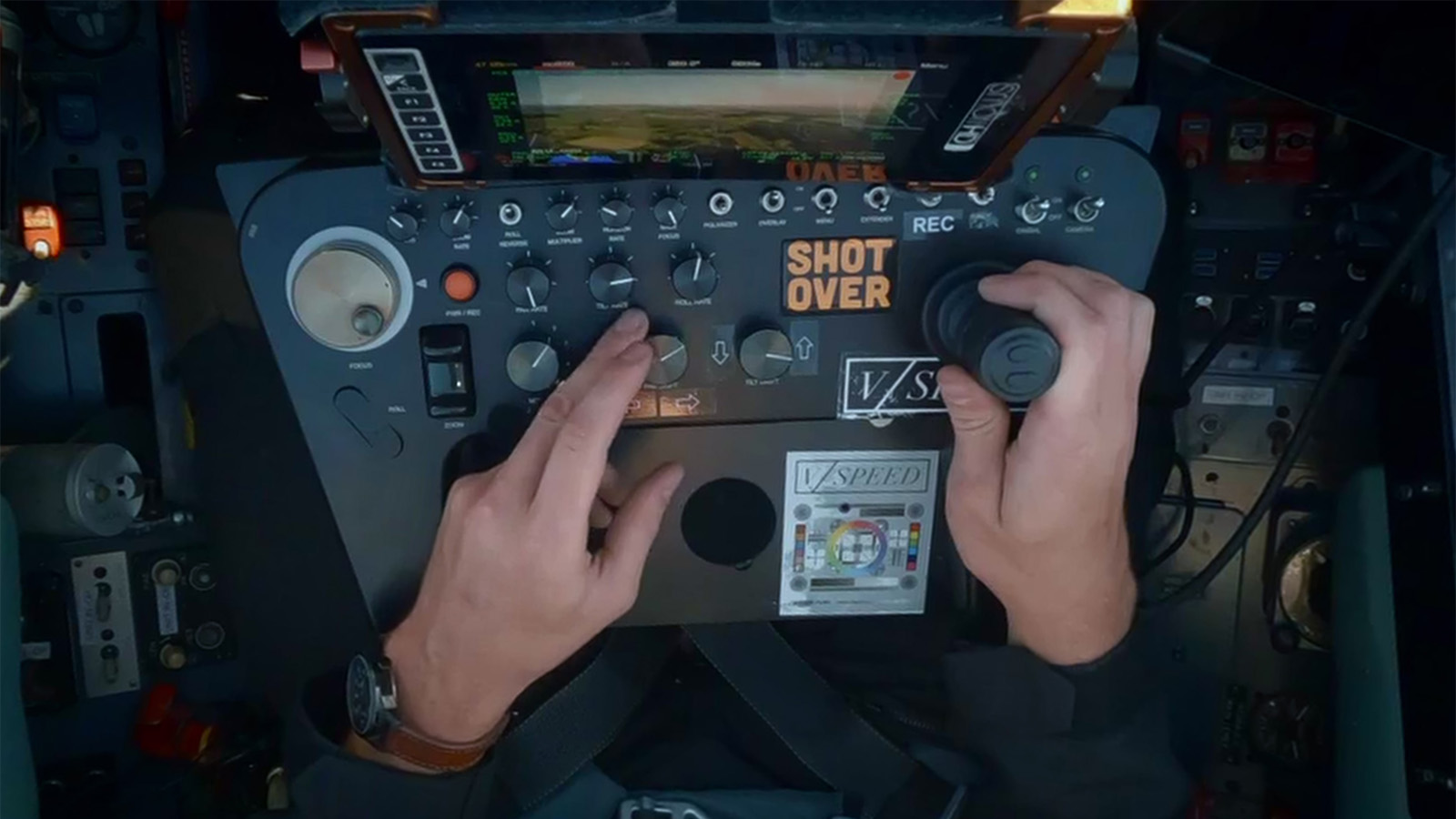
In the L-39, a Shotover F1 Rush gimbal is attached to the nose of the plane and the two-seater cockpit allows the pilot to fly the plane while the cinematographer maneuvers the gimbal, outfitted with RED or Sony cameras for this project. The team has customized the package extensively over the past several years, to the point where Greg confidently states that, “it’s the most sophisticated gimbal system in the civilian world.”
Certainly it’s an impressive technological arsenal, but the tools are only that—until you have someone with the artistic vision to not just use them creatively, but to push them in ways that make it possible for millions of people to appreciate the majesty and ferocity of our continent, which has some of the most extreme weather found anywhere on the planet.
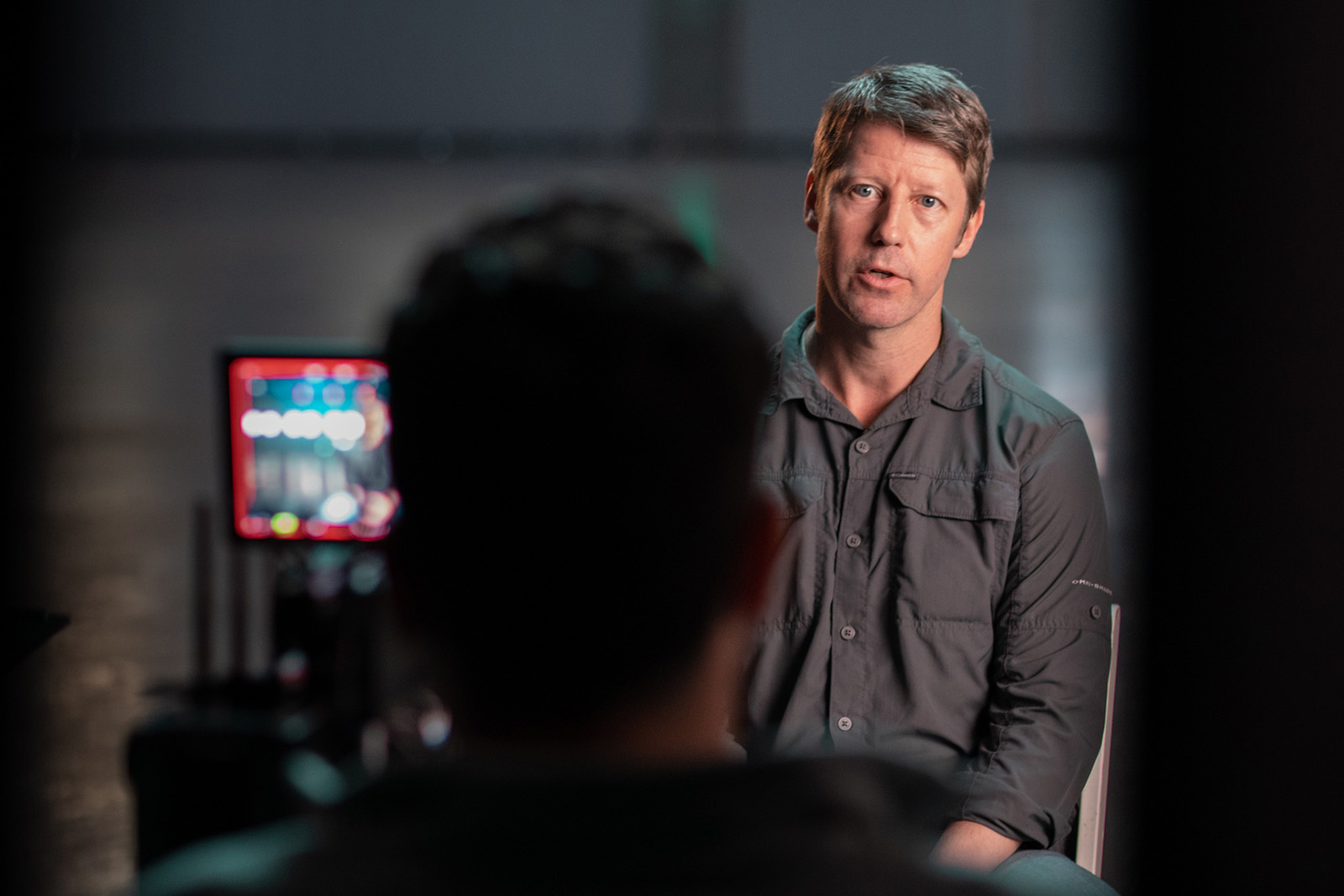
It’s Greg who is in charge of that vision. A former professional snowboarder and longtime National Geographic photojournalist and cinematographer, he’s well-equipped for tackling rugged conditions to capture images that are inaccessible to most people. From chasing storms to his well-known footage of a cheetah running in extreme slow motion, Greg is accustomed to pushing cinematic technology to new heights.
Beyond that, his background in photographing and filming everything from commercials to feature films to museum installations has developed his eye as an artist. This gives him the added ability to not just previsualize amazing compositions, but to also seize opportunities, even at 400mph, that present the kinds of gifts that result in award-winning images. “We’re a small team and that allows for a very calculated, but also nimble approach to the shot making,” Greg says. “We’re able to maneuver into a situation if the lighting isn’t quite right or if the terrain isn’t quite what we expected and pick new lines on the fly.”
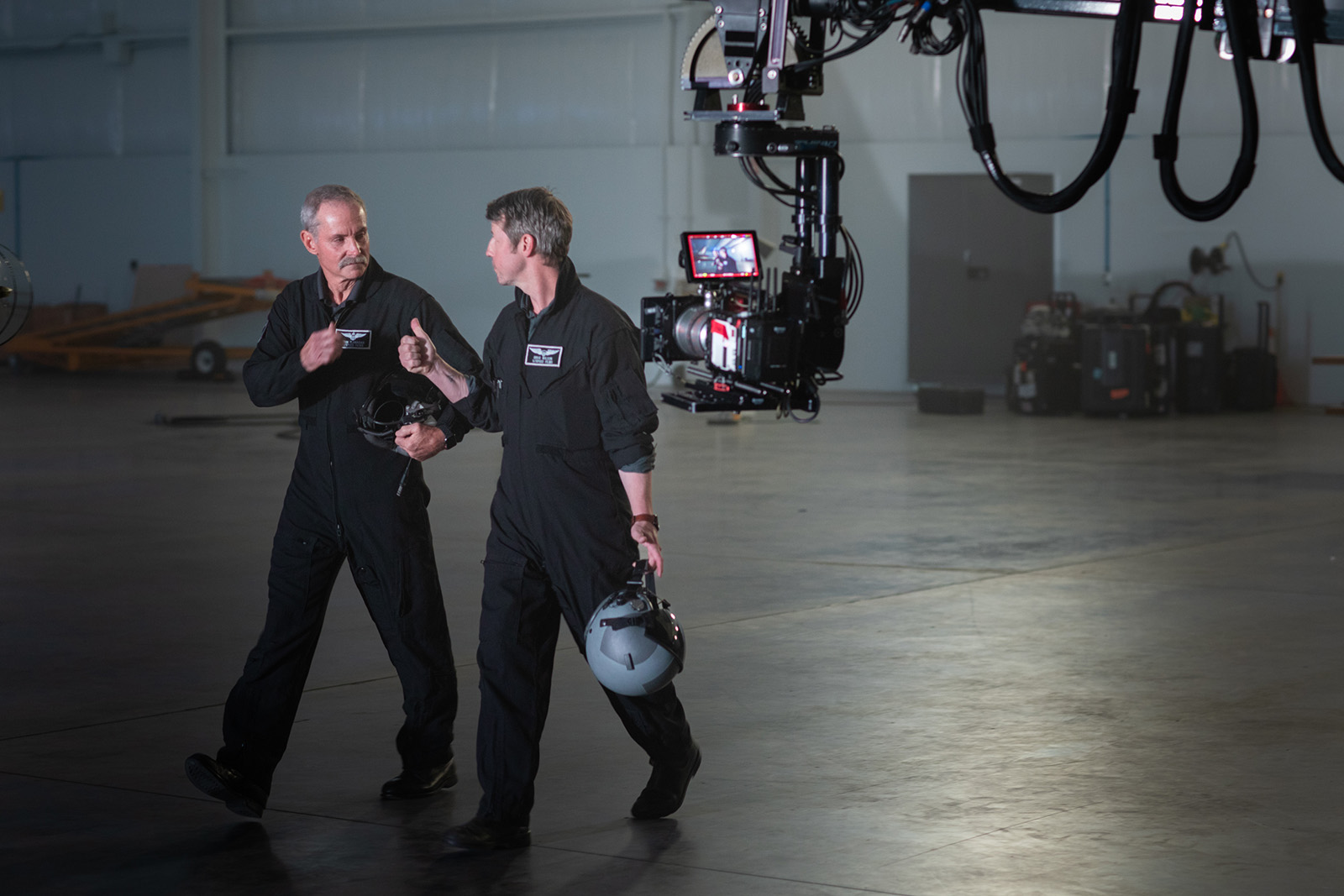
The calculation of the approach is, however, vital to the team’s success, and Mike’s background in both weather, aviation, software, and engineering have allowed him and Greg to build out a workflow that allows for maximum creativity. “With a team as diverse in experience and skill as ours, we’ve been able to mesh bits of technology that typically aren’t used together in film,” Mike says.
But some of that technology is enhanced and supported by filmmaking tools that millions of creatives use daily, and the V/SPEED team agrees that without them they couldn’t do what they do.
The first is Adobe Creative Cloud. “To get the Superman feeling of rushing through an environment, After Effects was key to developing the formulas of speed, altitude, frame rate, and shutter angles we used to deliver the appropriate. motion blur to the shot,” Greg says.
After Effects is key to making sure our shot is going to work at the speeds that we fly.
“The process that leads up to a successful flight is very visual,” Mike says. “Whether it’s renderings or an annotated map, we’re using a wide variety of products from Illustrator to Photoshop. And our business is legally secured on PDF documents that were created by Adobe. So Adobe permeates our business like I imagine it does for many creative companies.”
The other is, of course, Frame.io.
High pressure and high risks
There are so many ways in which time was a critical factor in the making of this project.
For one thing, the timing of major weather events is beyond the control of humans. With expert meteorological insight, the team forecast that tornadic activity would be unusually low in 2020—upping the stakes for 2021.
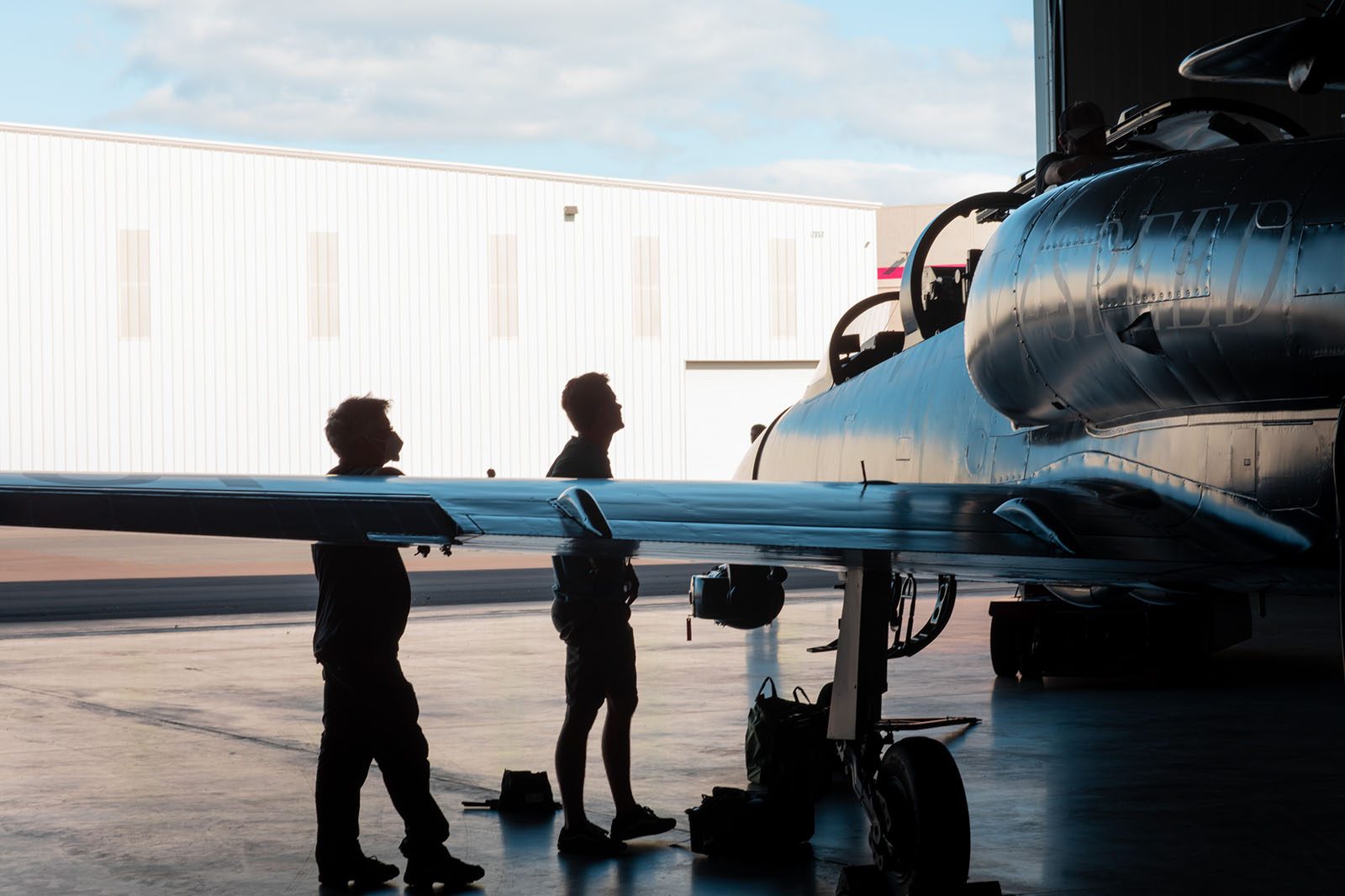
For another, filming during a global pandemic meant that Mark and Vanessa, who are typically hands-on as directors in their own right, couldn’t travel to be with the US team. This put them in vastly different time zones, which meant that while the V/SPEED team was flying and shooting, Mark was lying awake in bed wondering if they would get their tornado. Because, well…he’d kind of promised National Geographic that he would.
When you’re investing in the cost to fly a jet to capture something as ephemeral as the Northern Lights from the sky over Denali or a tornado as it’s forming, having the proof that you’ve got the shot in the can is priceless.
It’s why the entire team agrees that a shoot of this complexity would have been far more difficult to achieve without Frame.io.
“The pandemic put the kibosh on traveling, so we were very reliant on remote comms,” Mark says. “We were constantly reviewing rushes—making notes, sending them back—and slowly refining the filming technique and the look we were after for the series.”
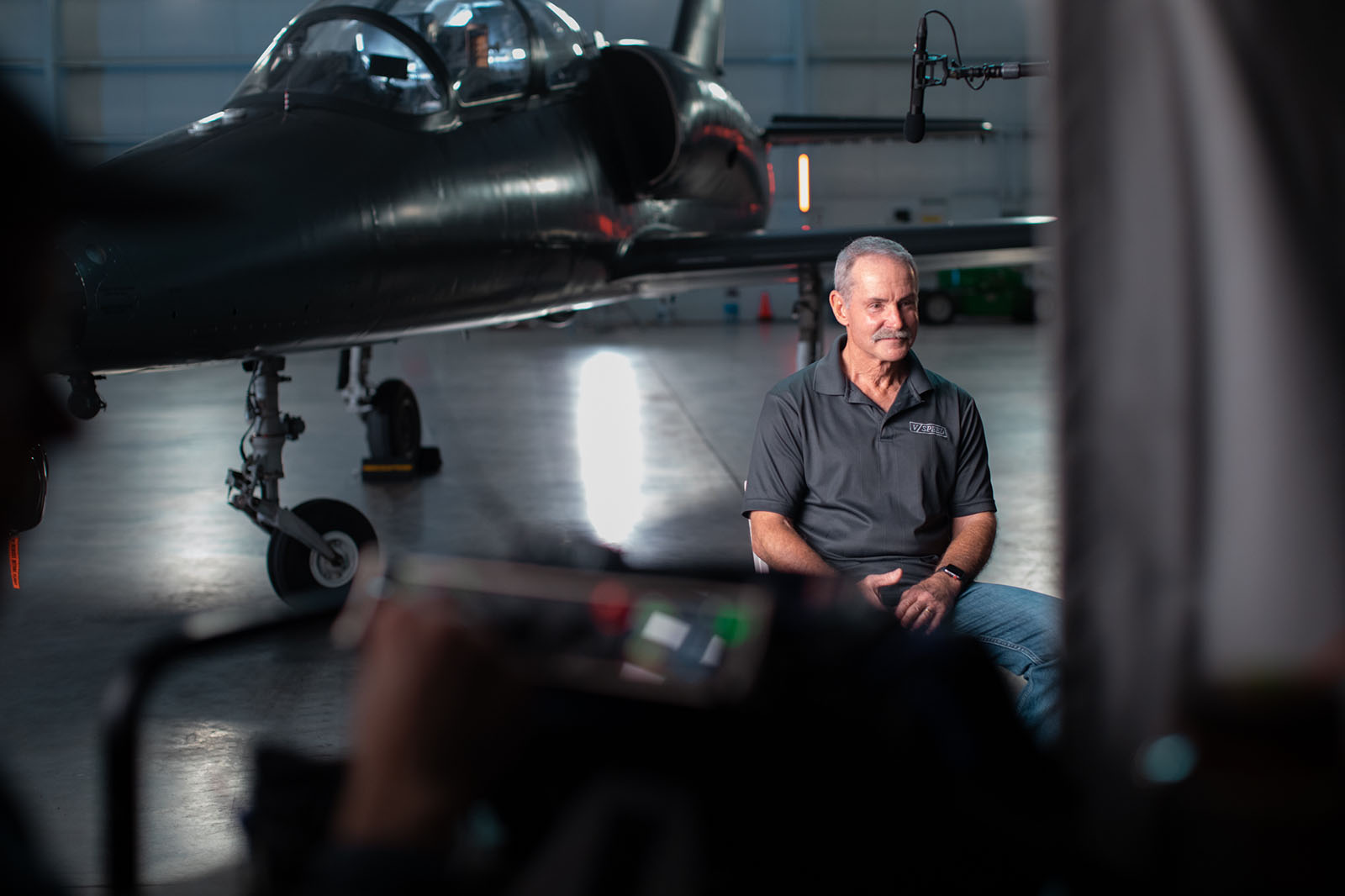
The two main tasks for the V/SPEED team were to capture the vast landscapes across the continent, from the Florida Keys to the north shore of Alaska, and to deliver new perspectives on big weather. According to John, preparation and timing were critical. “What are the lines we’re going to take? What are the obstructions to getting that shot? How’s the weather going to look in terms of where the sun angles on the mountains at these times? Nat Geo’s whole desire was to show lots of distance in a short period of time.”
“We’re shooting 35-, 40-, 75-mile runs, and they’re going to be sped up,” he says. “The challenge with that is if there are any deviations in how we’re actually flying that line, it shows in the speed-up. And so in terms of how that translates to flying, when we’re in the L-39 it takes all my skills to hold that precise line.”
And then there was the tornado. “Your continent has the most incredible weather, and there are good reasons for that,” Mark explains. “Your mountains run north and south, which is quite unusual, and that channels cold air from the Arctic that meets warm air coming up from the tropics. Where those two systems meet, you get supercells, you get tornados. And that weather shapes a lot of the animals and landscapes, so it was a very important thing to capture.”
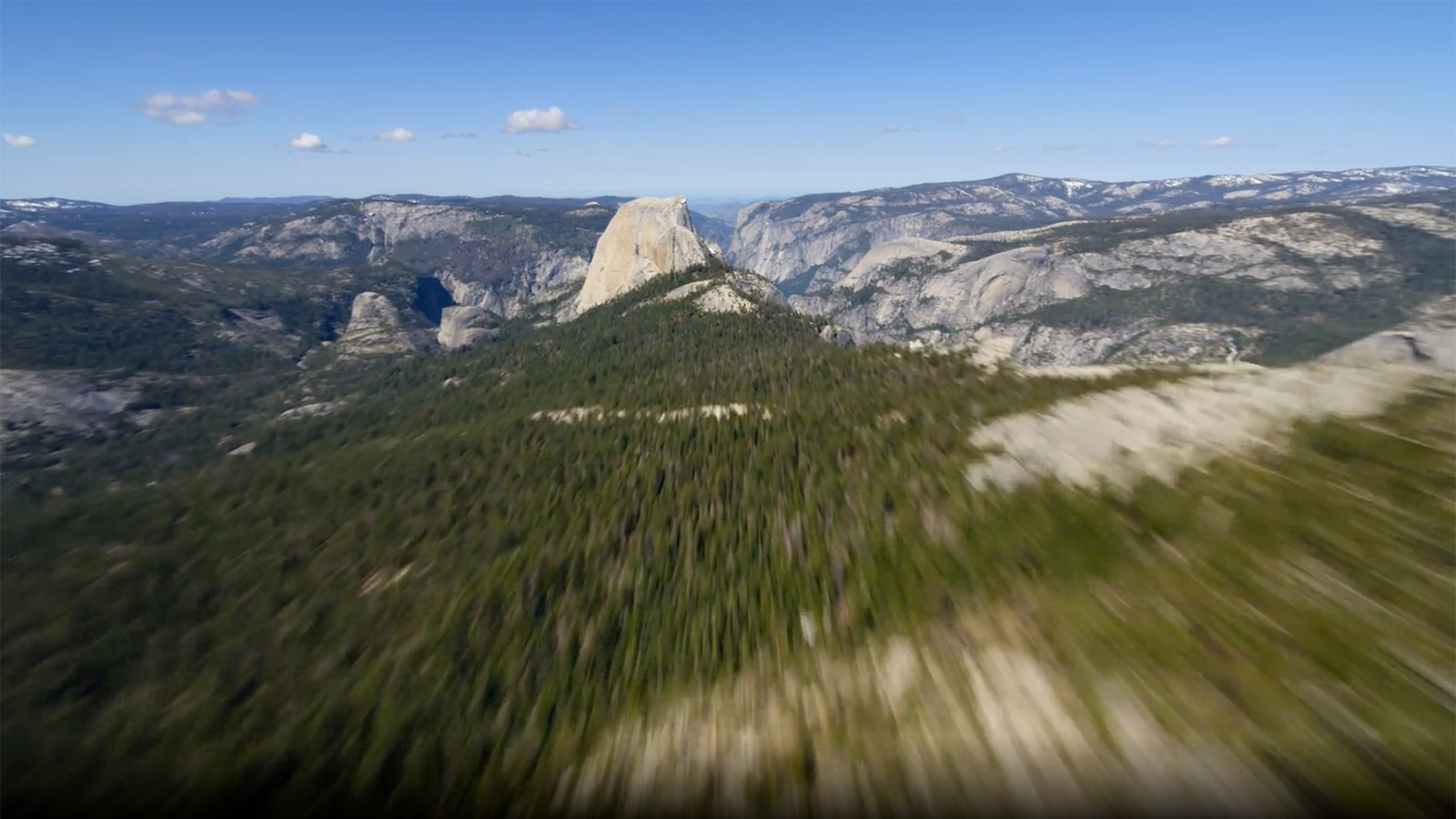
But why shoot the weather from the air?
“There are several advantages,” Mark says. “The first is that you can get to it quickly. Anyone who’s chased storms in the past knows that the storm’s always just over there and you never quite get to it in time. And when you do get to it, it’s fizzling. The jet lets you get to it fast, and also to get out fast, so if the going gets a bit gnarly, you can get away. Those are two huge advantages.”
When the V/SPEED team read the show briefs, all of them needed to take a beat to absorb the request. “My first thought was that it was a little crazy,” John says. “As pilots, the FAA tells you to keep at least 20 miles away from a big storm.”
But for Greg, especially, it “made the hair on the back of my neck stand up a little.”
He had previously spent seven seasons on the ground capturing big weather in the American southwest for National Geographic magazine. One project, in which he’d been invited to participate, involved several of his close colleagues tracking down a tornado in Oklahoma that resulted in their deaths.

The V/SPEED team, confident in their expertise and equipment, embraced the challenge and prepared accordingly. “We all have families we want to come home to,” Greg says. “In order to do this well, from a photographic and a safety standpoint, it’s not an approach that is at all cowboy or thrill seeking. It’s based on a lot of research, a lot of technical development and understanding of how these systems and forces come together.”
Led by Mike, whose experience as a pilot and with meteorology is critical to developing the flight plan, and severe-storm meteorologist Joey Picca, the team devised a process for safely approaching the tornado, including moving to a larger and more advanced aircraft—the same Embraer Phenom 300 used to film Top Gun: Maverick.
“Our work to put ourselves in the right place starts about three weeks out as we look at the broader patterns, because it takes time to clear schedules and make sure that everybody is available to go do the work,” Mike says. “Then we follow the forecast funnel down to the exact moment when we depart.”
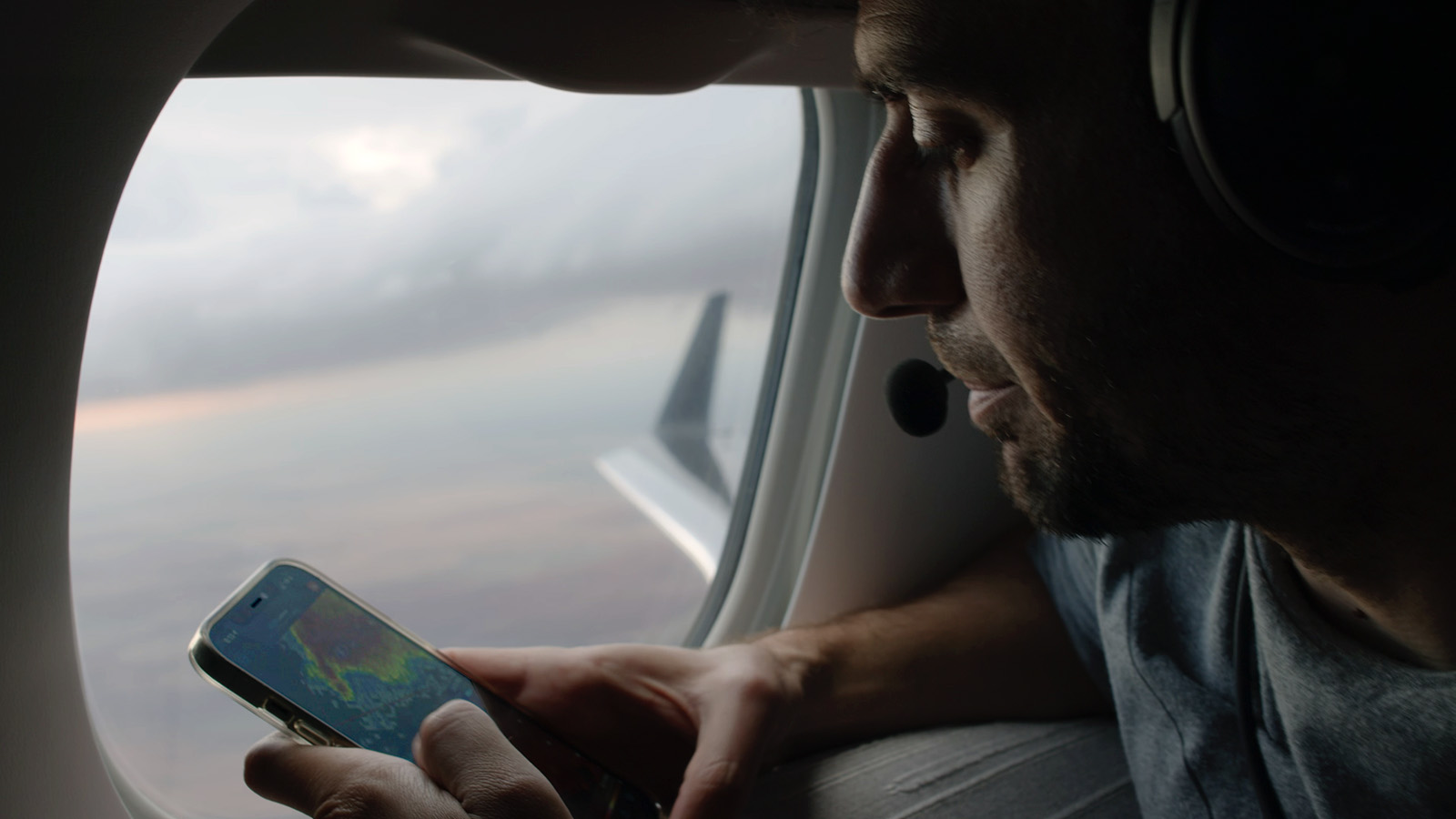
The day they captured the tornado started off with clear skies. “We were in Garden City, Kansas, and knew we were going to be heading south, but weren’t sure exactly how far south we were going to need to go. We ended up near Sudan, Texas, out by Lubbock,” he says. “One of the amazing things about the underlying meteorology was we launched into blue skies and we could see clearly where the storm ultimately was going to be and were relying on our meteorology to make sure that all the dynamics that needed to happen in between taking off and being on target were going to take place on time.”
“As we flew toward where we captured the storm, we were able to watch classic storm development, where you start with some light cumulus clouds, and then some of those take over and start building and they become towers, and then some of those towers build and win their environment and they become storms. There are a lot of things that need to happen for them to grow and mature into the kind of phenomenon that we wanted to capture.”
By the time they reached where they needed to be,“things had filled in dramatically,” Mike says. “The classic line is to stay 20 miles from a storm. Ultimately, we were less than half a mile away from the updraft on the inflow side of the storm, and because we had the right knowledge and experience onboard, we were completely safe. But I would hope that nobody’s ever seen exactly what we saw because they shouldn’t have been where we were without a good reason.”
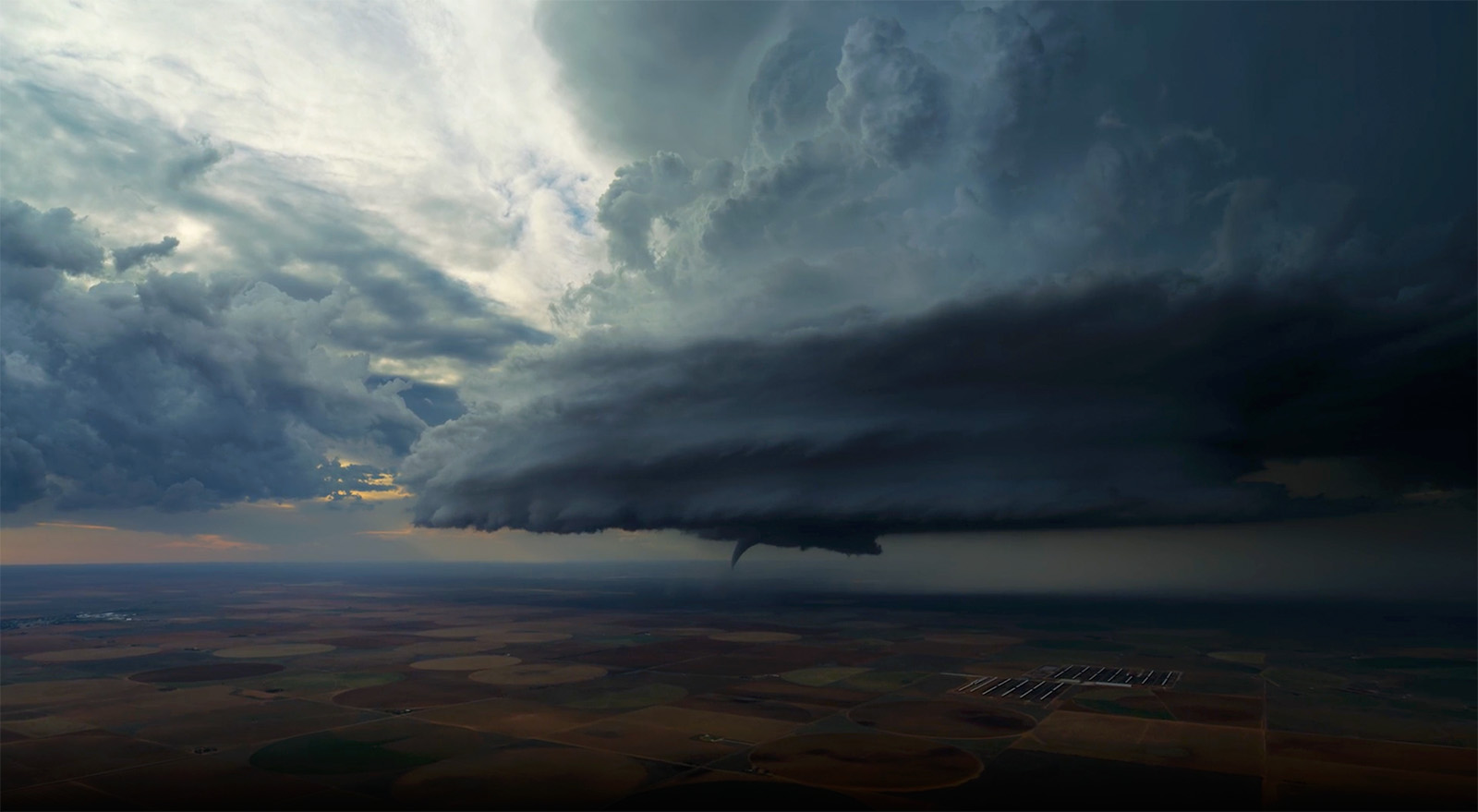
While the crew was flying late in the afternoon over Texas, Mark was at home in the UK, trying to sleep but not really succeeding.
“I remember being on tenterhooks because we were getting later in the production and we didn’t have a huge amount of money left,” Mark says. “As the day went on, Mike had been sending me little weather forecast frame shots of the weather building. Tornados tend to form in the late afternoon when you’ve got all the energy from the day’s sun in the system, and it’s kind of bizarre that I’m in the small hours of the morning while they’re up in the sky filming tornados, but I guess that’s modern filmmaking.”
“I got the call from Mike, who said, ‘There’s something coming in Frame.io. Go have a look at your screen.’ So I got out of bed and went downstairs, thinking ‘I wonder if they’re getting it, I wonder if they’ve nailed it.’”
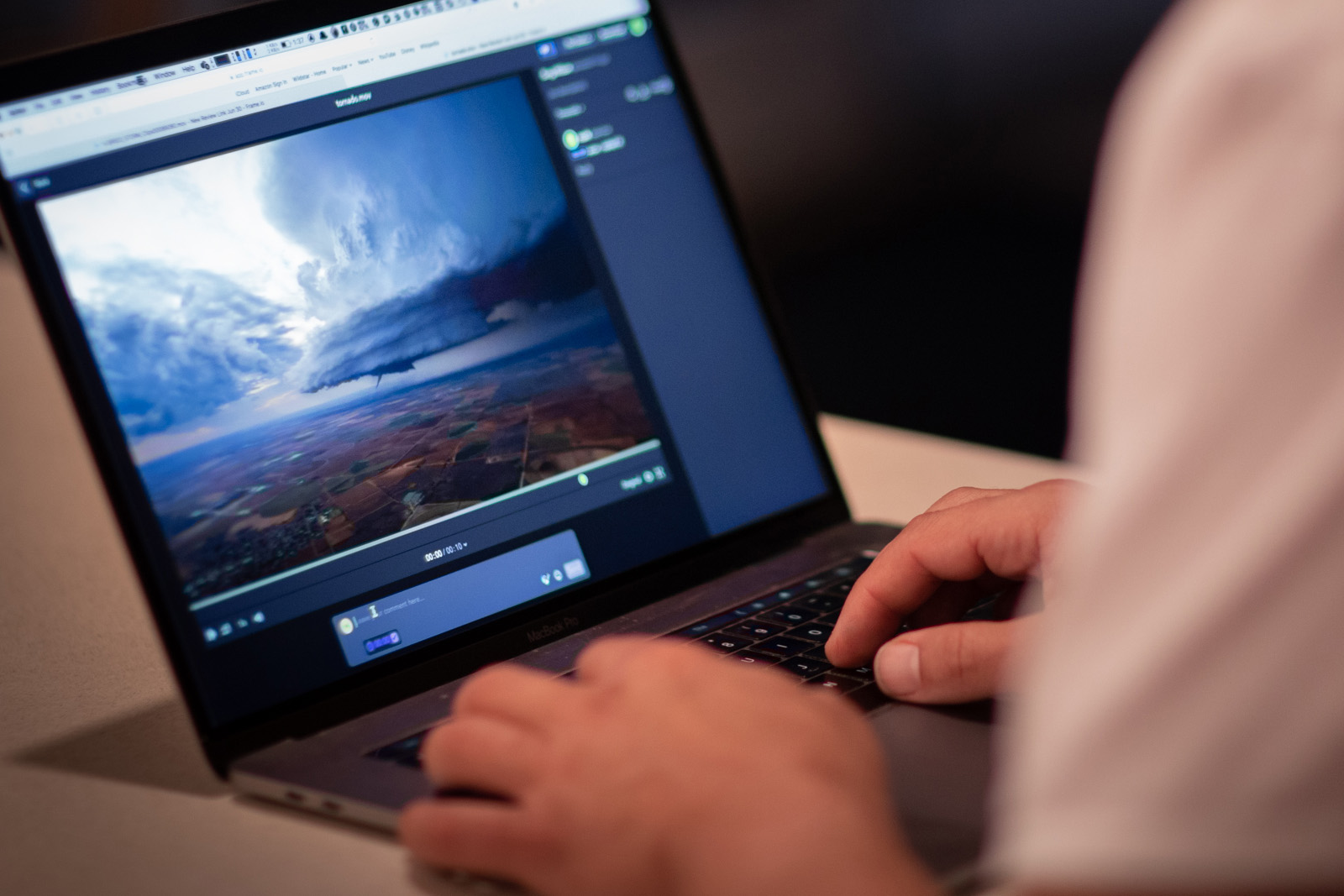
“I just remember dragging through that clip for the first time and thinking, ‘Yeah, that’s going to make National Geographic very happy,’” Mark says. “We sent them a little sneak preview of the twister footage and they were over the moon. They sent back lots of emojis and exclamation marks and that pretty much summarized my feelings about it, as well.”
As for the V/SPEED team, they couldn’t have been more elated as they waited for Mark to see the footage—which felt like a long time but was probably only a couple of minutes.
“The comment comes in from Mark on Frame.io,” Greg says. “‘Oh my God! You got it!’ That was an exciting, exciting time because we’re all in this together but we’re not in the same place. Mike and I both definitely teared up. It was a proud moment. It was a relief and a confirmation of our work together. A lot of people thought it was crazy. I think for Mike and Joey there was a tremendous amount of pressure on the team to execute and deliver this for our clients in England, and for the executives and the producers at National Geographic and at Disney.”
If that thing develops a tornado, fly right at it.
What about the TOPGUN pilot’s reaction? “It was kind of a spiritual thing for me,” John says. “I had never seen a tornado before, and I’m flying around and it took a while. We sat out there and orbited and everybody on the ground and in the air was waiting for this tornado to develop. Mike and Joey started to see the funnel forming. I think Mike’s words were, ‘If that thing develops into a tornado, fly right at it.’”
“It was amazing and it was quite beautiful, too, because it was in clear air. You could see everything—how it started, how it started coming down—and then as it touched down, we actually called in the tornado warning, which was really amazing. We all felt like we got to see something that nobody’s seen from that angle. It was really special.”
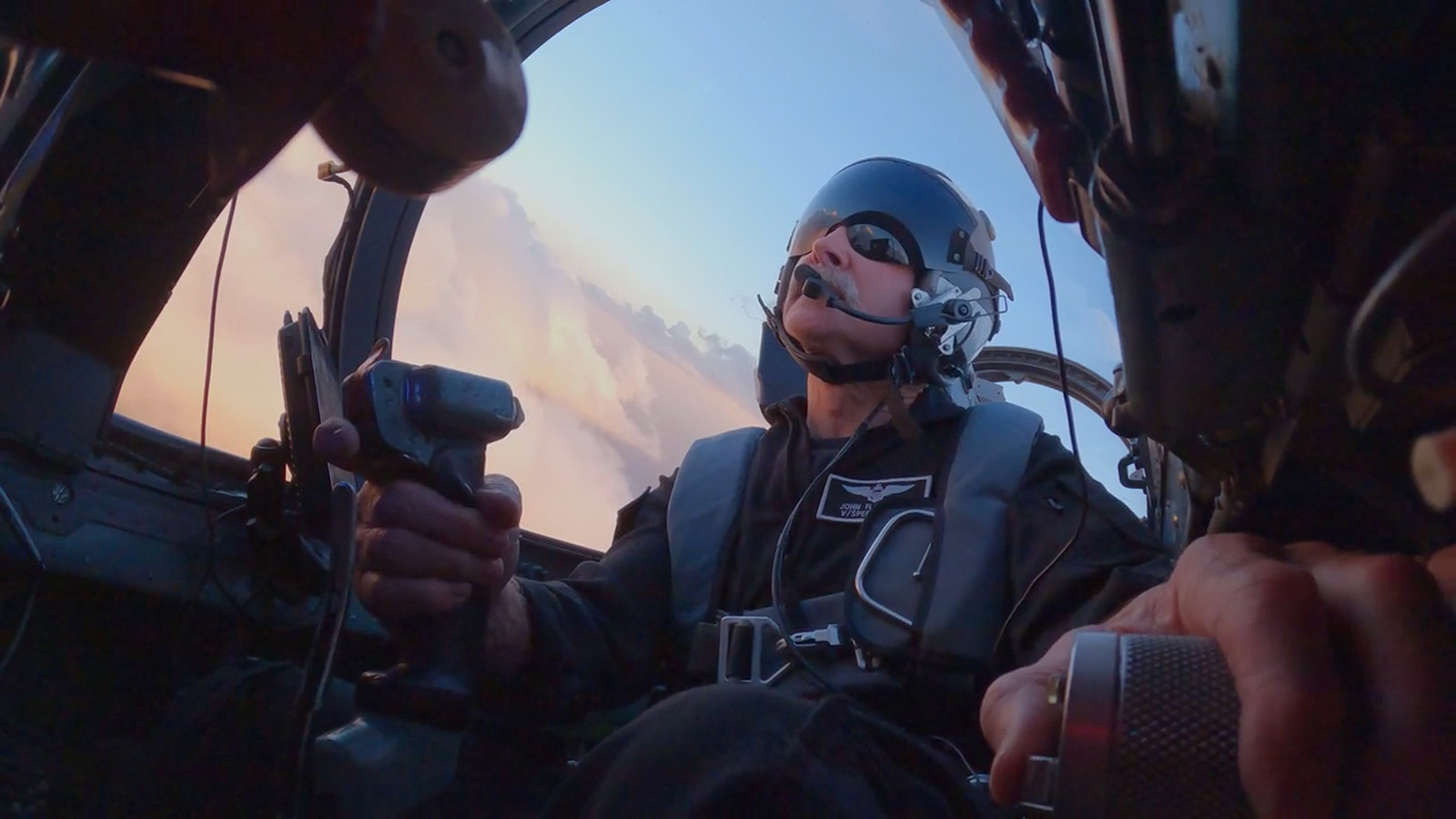
Not only did the team capture a magnificent tornado in clear air, the best part was that it touched down on open land so no one on the ground suffered any losses or injuries.
High expectations, high security
From a logistics and hardware standpoint, the shoot was obviously a success. But when you have a client on the other side of the ocean, “just” showing them the shots isn’t enough. Especially when you’re dealing with directors and executives who have seen the best of the best, you have to be able to show them the footage at the quality they expect.
It’s another reason why Frame.io Enterprise became the platform of choice for V/SPEED and for this project.
“You have to be able to show this imagery at a particular quality to know whether it’s going to make the grade or not,” Mike says. “We were able to upload extremely high-quality proxies quickly over cellular networks and get feedback practically instantly.”
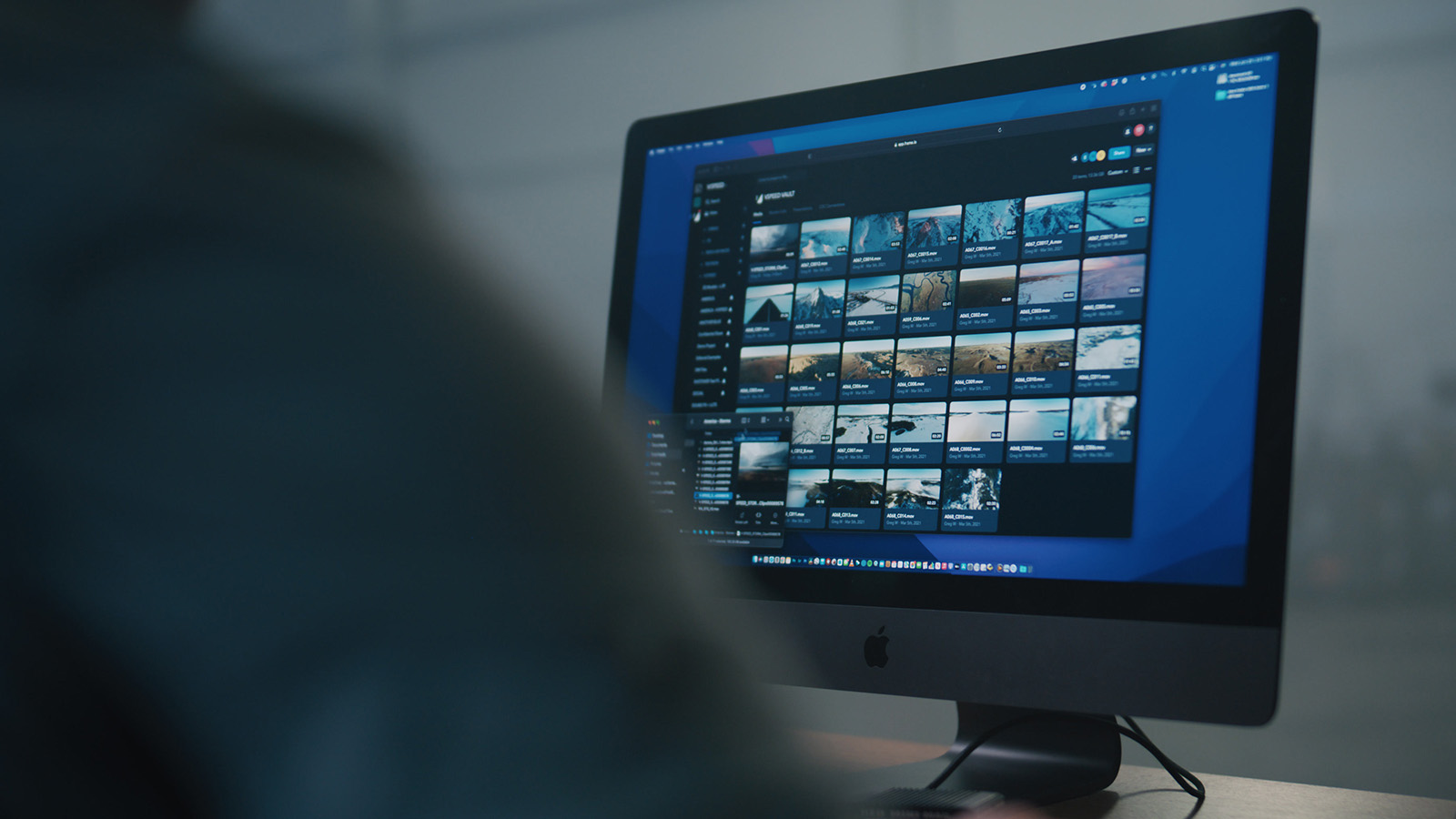
This kind of accuracy and speed plays a direct role in the V/SPEED’s team ability to determine whether they can move on to a new location, and also to give timecoded notes as they refined the approach.
“We work in an industry where quality is critical,” Greg says. “The first look at a shot is how your impression is typically built. If you have a low-quality, low-res, pixelated image that the folks back in England are looking at, they may not have a good impression of the shot. If it wasn’t viewed in the right light at the time by the producers or the director or the editor, it could be passed over because it didn’t appear to have the quality in which it was captured.”
“Being able to screen the footage in England while we’re in the field in the US and seeing the quality that the image was captured at was very important for the comfort level and understanding of what these images really did look like. So between the quality of the proxies that we were able to deliver and the rapid-fire upload speeds, and the ability to talk through timecode-specific moments of a shot was a real relief for the entire team. It enabled us to have a virtual proximity to each other that was really powerful for us to actually get the job done.”
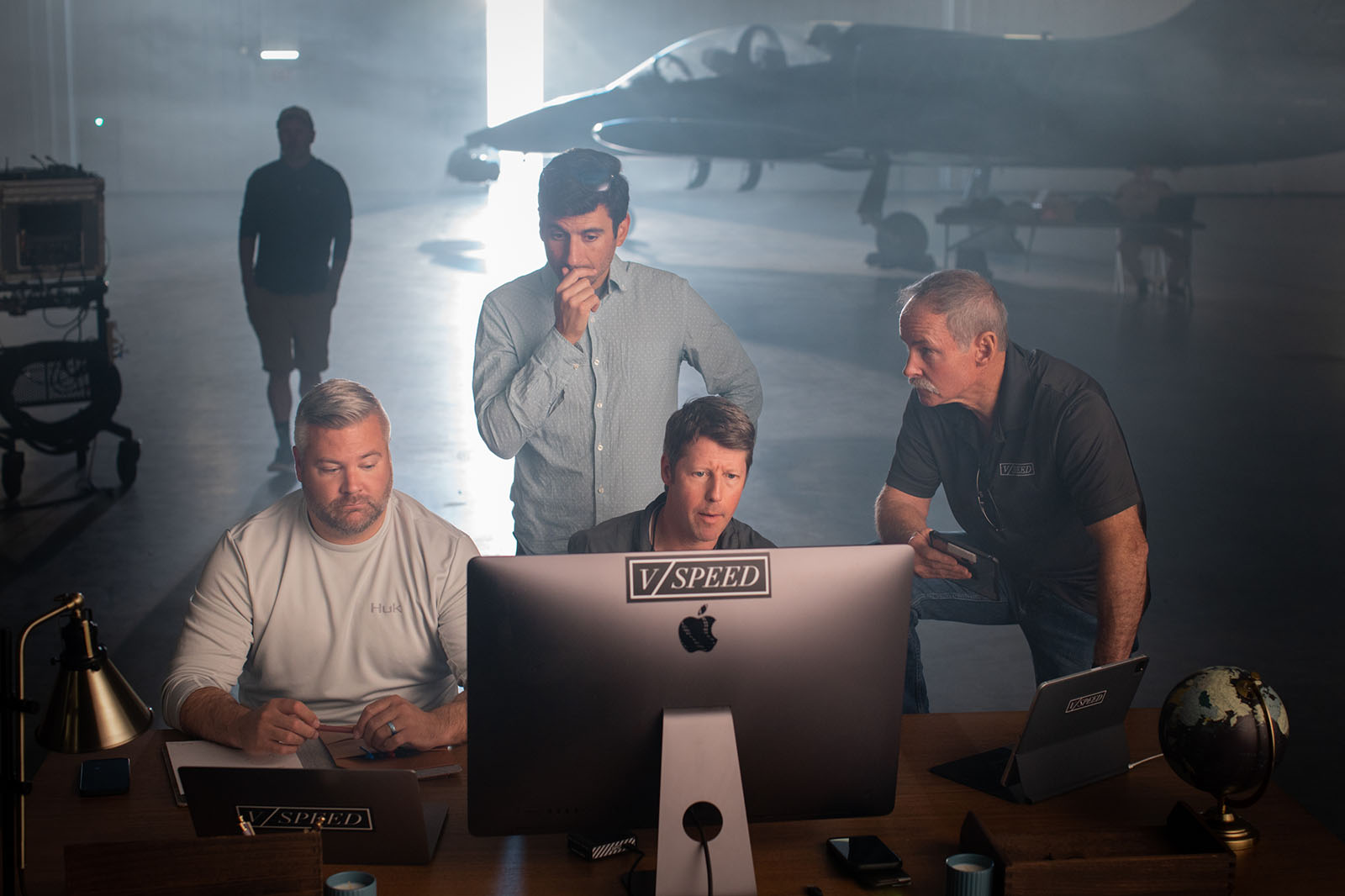
And then there’s the security factor.
It almost goes without saying that Disney maintains some of the tightest security around their content in the world. Add to that the fact that these images were so high-value and so unique, if they had leaked prior to the program’s July 4th air date, it would have been somewhere between very bad and disastrous for all concerned.
“When you’re working with a client as big and sophisticated as Disney, the expectations for security are understandably immense,” Mike says. “We’ve got incredibly valuable content that needs to make its way from point to point safely throughout the production process. The Watermark ID feature let us create unique transcodes for individual users, which meant that even though they had to be passed to a good number of executives because they were so important to the series, the peace of mind it gave us was priceless.”
When you’re working with a client as big and sophisticated as Disney, the expectations for security are understandably immense.
Highly collaborative
As the owner of a rather small and nimble business, Mike also appreciates the time savings and flexibility Frame.io affords him. “Being a specialized team deployed remotely in the field in far-flung locations and hotels across America, it can be a challenge to manage the mass of data we generate on a given day. Frame.io was our choice from the beginning to help us communicate. I don’t know how we’d do it any other way.”
But even more than that, Mark relied on the creative collaboration Frame.io afforded them as they worked through what was essentially a new film grammar.

“Working with V/SPEED on the series, there was quite a lot of back and forth with early rushes,” he says. “One of the things I liked about the Frame.io process was that any time of the night or day, I could get on to the recent clips and leave notes that were not just against the shot but against a specific part of a shot. And I would go to bed and then when the guys woke up in a completely different time zone, they could just scrub down and get my feedback and that would go into the next day’s filming.”
“Through this review process, we pretty quickly settled on a really nice way of maximizing the technique. It’s a very different kind of film grammar from filming with a helicopter or a drone or anything else. It’s a completely different way of working and even though you can’t be there in the craft with the cameraman, everything that you’ve discussed together leading up to that point goes into the shot. And so the constant collaboration we had back and forth in the lead up to key shots like the tornado shot was crucial, really. I think when you’re actually discovering a new way of working or a new technique like we were here, that’s very valuable to help you dial in what it is you’re trying to achieve as a team. And I think it worked really, really well.”
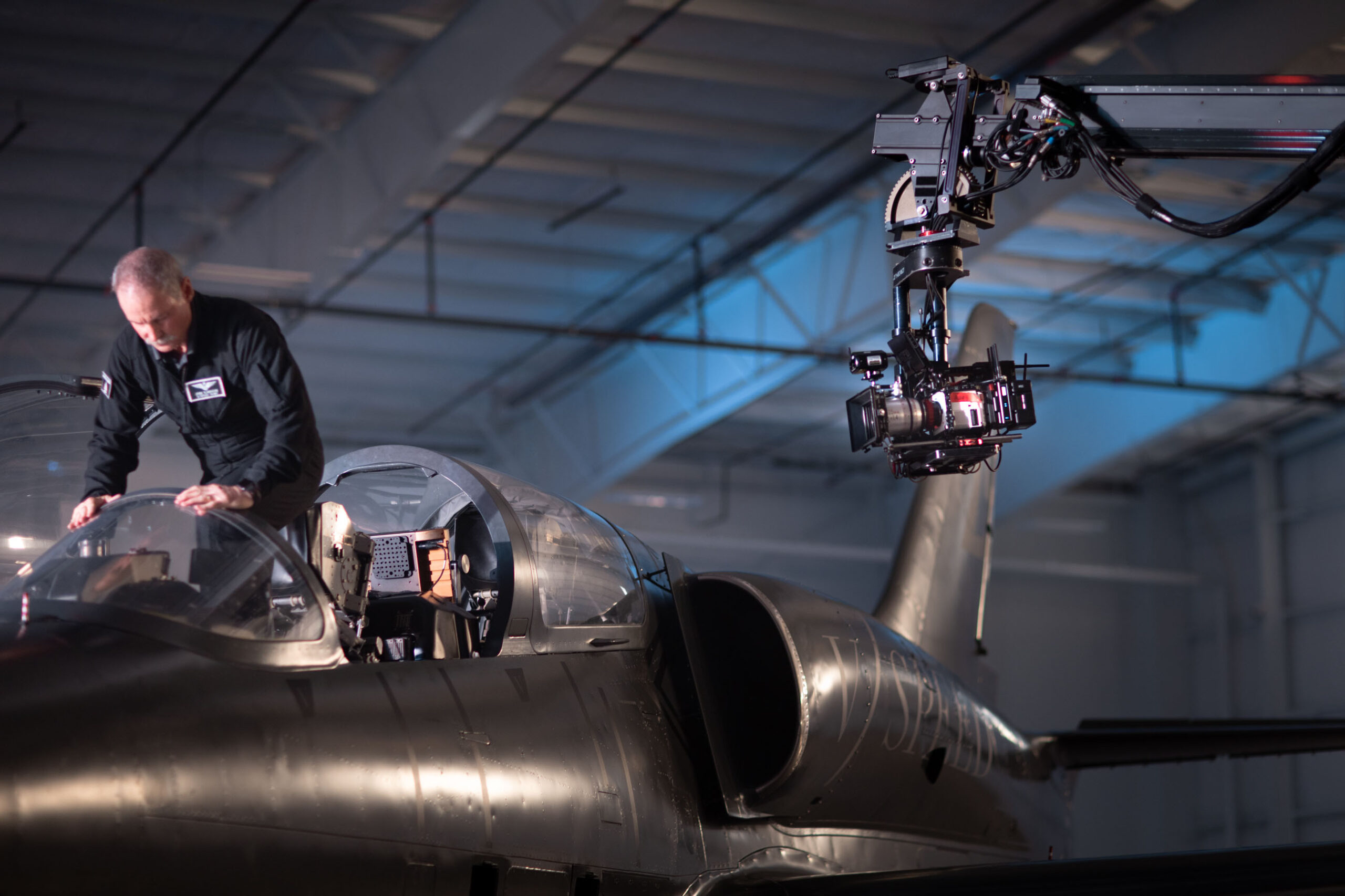
High (and low) impact
In the end, the team agrees that the work they did on this series was a high point in all their careers—for the technical achievement, but also for the way this footage can show people views of our country that are unique, striking, and weighty.
“It’s been a privilege to film and to see the geography of the United States,” John says. “And I think the thing that has really inspired me is that it isn’t just what we do, but what we can give. I think this imagery can move people in a way that helps them recognize the gift of this country, the gift of this planet. I want people to experience something they would never have seen, but more importantly I hope it moves them to a point where they want it to continue and want it to be better.”
That sentiment is also why it’s important to all of the filmmaking team to leave as small a footprint as possible in the making of the series. “We do a tremendous amount of planning to make sure that we’re only flying exactly when we need to and exactly the locations that we need to, because we want to make sure that we’re doing our part to not create any emissions that we don’t need to.” Mike says.
Mark echoes the thought. “Flying with jets is expensive for a wildlife documentary, and we want to be very mindful about the amounts of carbon that we use. We wanted to be extremely careful just to fly no more than was strictly necessary. Having the ability to constantly review shots and know when we got a shot and when we could move on or make sure that today’s mistakes weren’t repeated tomorrow were two key things that allowed us to fly less. And I think it would have been very hard to have done without Frame.io.”
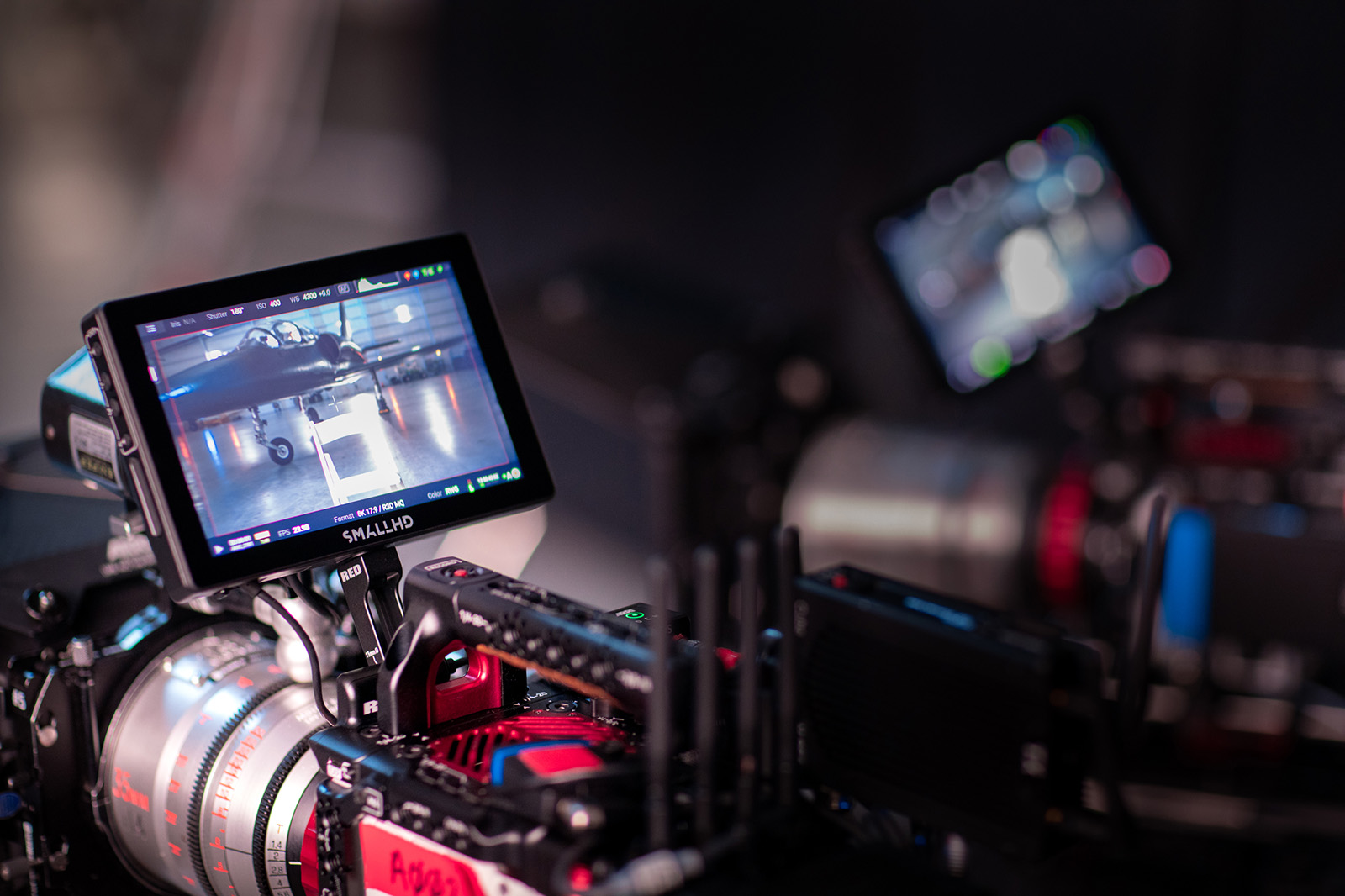
Greg talks about V/SPEED’s origin and ethos. “We have a saying: purpose behind everything. When we started building our first aerial film jet, it originally was going to be focused on air-to-air, jet-to-jet aircraft work. And Mike and I, even before we started turning wrenches and building it, kind of went back to our roots, which are in natural history and storm research, and figured that applying technology like this to the natural history world was really where we felt like our focus and our energy and our time and resources were better spent.”
I’m honored to be part of such a dynamic, humble, and talented team of aviators, engineers, and filmmakers.
Thinking back on his years of revealing hidden places to millions of viewers, he says, “I’ve always pushed for progress in image making. And I’m honored to be part of such a dynamic, humble, and talented team of aviators, engineers, and filmmakers who put these shots in the can to give people new perspectives on where we live.”
As always, when we listen to the stories of our customers, we at Adobe and Frame.io are likewise honored, humbled, and grateful to help enable them to tell these important stories in such incredible ways.



